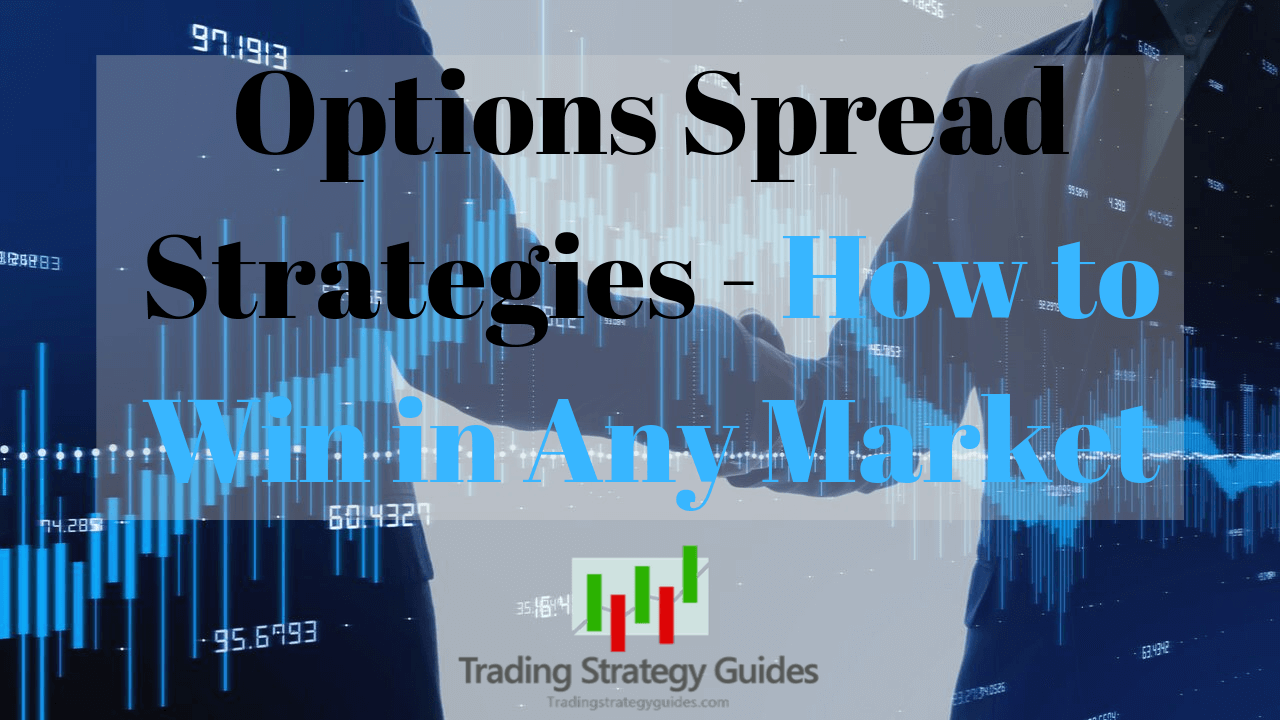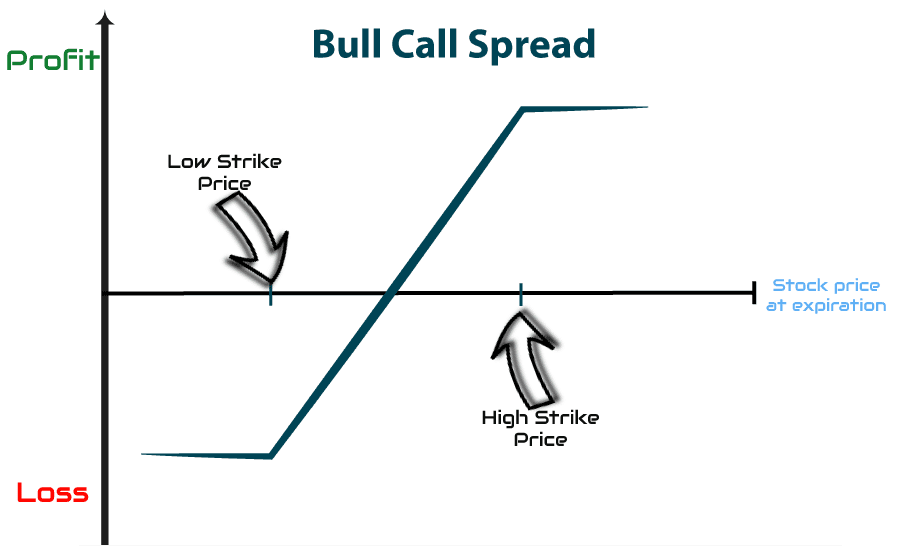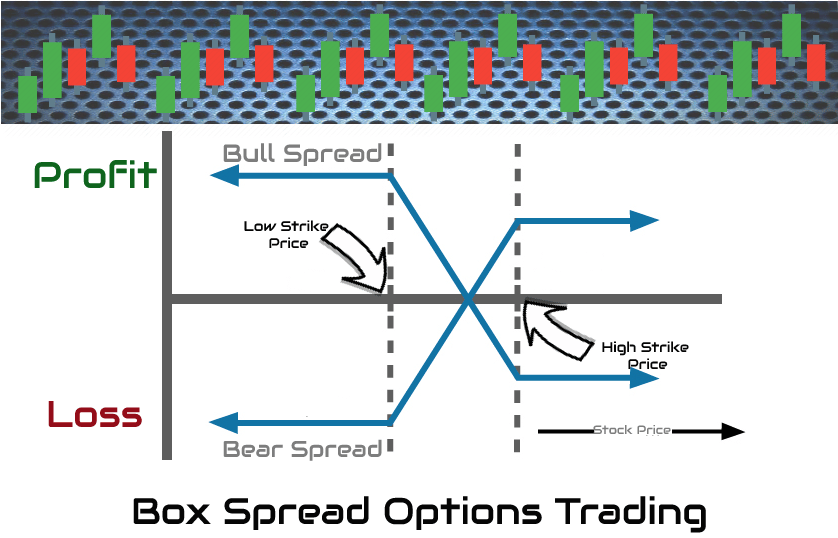Options Spread Strategies – How to Win in Any Market

These options spread strategies will help you limit your exposure to risk and overcome the fear of losing out. Options spread strategies make it significantly easier for your trading strategy to become more dynamic. This practical guide will share a powerful Box spread option strategy example. We cover the basics of bull call spread option strategy to help you hedge the risk and improve your odds of making a profit.
If this is your first time on our website, our team at Trading Strategy Guides welcomes you. Make sure you hit the subscribe button, so you get your Free Trading Strategy every week directly into your email box.
With options spread trading it’s important to understand the math behind it. The biggest “AHA!” moment in your options trading career will be when you understand how options spread works. Options spread trading strategies present an excellent opportunity to improve your bottom line. Begin by reading our options spread strategies PDF.
Unlock options trading on Robinhood App and start buying options spread cheaper, commission-free using: Robinhood App Trading Guide (Everything You Need to Know). This is one of the easiest places to begin trading options for free.
We’re going to break down the intro to options spreads and will describe how to become a successful options trader.
Table of Contents
What Is An Options Spread? How Do Options Spreads Work?

Spread option trading is the act of simultaneously buying and selling the same type of option. There are two types of options: Call options and Put options. Call options give you the right to buy in the future. Put options give you the right to sell in the future. For example, if you buy a call option for Amazon stock and simultaneously sell another call option for Amazon stock, you have opened a spread trading position.
Usually, spreads are composed of at least two-leg order or a multi-leg options order like the butterfly spread option strategy.
Options spread can be confusing, but they are easy to understand if you have the complete options trading guide, which can be found here: Call Option vs Put Option – Introduction to Options Trading.
The difference in either the expiration dates or the strike prices between the two options is called the spread.
The key takeaway when building a spread:
- The combination of options is based on the same underlying asset. For example, if you buy calls for Apple stock, you also sell calls for the same stock Apple.
- You have to buy and sell the same type of option. For example, if you buy a Call option, then you sell another Call option
- You can use a variety of combinations of expiration dates and/or strike prices.
Let’s now see what is the simplest options combinations to construct a spread:
What is a Call Spread Option Strategy?
A call spread is an option strategy used when you believe the underlying asset price will rise. The call spread strategy involves buying an in-the-money call option and selling an out-of-money call option (higher strike price). Both options have the same expiration date.
The call spread is also known as the bull call spread strategy. Engage in this strategy when markets appear to be bullish.
The options spread will help you profit in any type of market conditions. You can tackle down bullish trends and bearish trends.
For bearish trends, we use the bear call spread trading strategy. Use this strategy when it appears prices are likely going to go down. The bear call spread is an option strategy that involves buying in-the-money call options and selling an out-of-money call options (lower strike price). Both options have the same expiration date.
The bear call spread trading strategy is also known as the short call spread.
But what about when we’re trapped inside a range-bound market?
Spread options are the most versatile financial instruments. With the right options trading strategy, your portfolio can become significantly more diverse and dynamic. You have at your disposal endless strike prices and expirations dates available so you can build a complex calendar spread option strategy. So, options spread can be adjusted based on the current market conditions, including sideways trading.
Spread options are a double edge sword. On one hand, you limit the risk, but on the other hand, the potential profits are also limited. The options spread will always create a limited price range to profit from.
Further information on the various types of spreads is presented below:
Types of Options Spreads:
In this segment, we’re going to outline how many types of options spread are, and help you better understand these concepts. Options spreads can be classified into three main categories:
- Vertical spread option trading strategy.
- Horizontal spread option strategy.
- Diagonal spread option strategy.

1. Vertical Spread Option Strategy
Vertical spreads are constructed using simple options spreads. A vertical spread is an options strategy that requires the following:
- Buying and selling options of the same type (Calls or Puts).
- Same expiration date.
- Same underlying asset.
- But, different strike prices.
On the options chain, these positions appear vertically stacked, hence the name vertical spread.
We can distinguish four types of vertical spread options strategies:
- Bull Call Spread Option Strategy
- Bear Call Spread Option Strategy
- Bull Put Spread Option Strategy
- Bear Put Spread Option Strategy
We’re going to discuss the bull call spread because all others are based on the same technique and function alike. We can also go one step forward and classify spreads based on the capital outlay (debit spread or credit spread) involved:
- Debit spread options strategy occurs when you incur an upfront cost from purchasing the options.
- Credit spread options trading strategy occurs when you receive an upfront credit from purchasing the options.
2. Horizontal Spread Option Strategy
A horizontal spread is an options strategy that requires the following:
- Buying and selling options of the same type (Calls or Puts).
- Same strike price.
- Same underlying asset.
- But, different expiration dates.
Horizontal spreads are also commonly known as calendar spread or time spread because we have different expiration dates.
3. Diagonal Spread Option Strategy
A diagonal spread is an options strategy that requires the following:
- Buying and selling options of the same type (Calls or Puts).
- Same underlying asset.
- But, different expiration dates.
- And different strike prices.
Horizontal spreads and diagonal spreads are both examples of calendar spreads. The calendar option spread is an advanced strategy that profits from both the decay in the option prices and the differential between the contract months and the downward directional movement of the underlying stock. As stocks change in price over time, you’ll have plenty of opportunities for profit.
Check our diagonal spread option trading strategy example HERE.
The bottom line is that you need to get familiarized with all options spread types. This will increase your odds of success.
Bull Call Spread Option Strategy
What is a bull call spread?
A bull call spread requires to concomitantly purchase at-the-money Calls and then selling out-of-money Calls with the same expiration dates. The reason why we sell OTM (out of the money) calls is to help finance the ATM (at the money) calls. We know that ATM calls can be fairly expensive, so this is a great method to reduce those costs aka the options premium price.
In options trading, premiums are upfront fees that you pay when you buy a call option. When you sell a call option the investor receives the premium. So, by selling the second OTM call option you’re basically offsetting some of the prices you paid for the first ATM call option.
Premiums can be very expensive if the option strike price is close to the current stock price.

How to profit from trading bull call spreads?
As the name suggests (BULL call), you profit from a bull call spread if the underlying asset will rise in value. The market sentiment needs to go higher.
Bull + Call = Bull represents a market that is going higher + Call represents an option that you buy if you think the market will go higher.
The key element of the bull call spread is the assumption that the market price will rise.
What’s the maximum risk associated with bull call spreads?
The maximum loss that you can incur in a bull call spread is the premium price you pay for the option plus the fees. The potential loss will always be known before you get into a trade.
Now, what’s the maximum profit you can make from the bull call spread option trading strategy?
The profit can be calculated by taking the difference of the strike prices (ATM call and OTM call) minus the maximum risk, which we calculated previously.
Bull Call Spread Option Profit = Strike Prices – Maximum risk
Let’s go over a quick example, so we can put into practice the options trading theory.
For this example, we’re going to go with Apple stock options prices.
At the moment of writing this option spread strategies PDF, Apple stock price is trading around $223 per share.
The first step to build your bull call spread is to buy ATM calls at $223. Secondly, because we assume the APPL stock price is going to go higher, we sell OTM calls at let’s say $250. Our profits will be capped at $250.
For simplicity’s sake, let’s assume you pay $2 for the ATM calls and receive $1 for selling OTM calls. The cost associated with this trade is only going to be $1 ($2 long call premium – $1 short call profit = $1 x by 100 contract size = $100).
The final cost $1 is less than just going out and buying the ATM calls, hence why we have the “limited risk” expression.
The right way to buy cheap options is to use the bull call spread option strategy. However, this options trading strategy is more suitable when you think the underlying asset is only going to increase moderately.
In the next segment, we take the box spread option strategy and construct a practical example resulting in a risk-free arbitrage opportunity.
Box Spread Option Strategy Example (Long Box)

The box spread is a complex arbitrage strategy that takes advantage of price inefficiencies in options prices. When the options spreads are underpriced in relation to their expiration value a risk-free arbitrage trading opportunity is created.
The box spread option strategy is also known as the long box strategy.
Building a box spread options involves constructing a four-legged options trading strategy or combining two vertical spreads as follows:
- Buying a bull call spread option (1 ITM call and 1 OTM call).
- Buying a bear put spread option (1 ITM put and 1 OTM put).
The short box options strategy is opposite to the long box strategy.

The way you profit from the box spread options and create a risk-free position is by using the same expiration dates and strike prices for the vertical spreads. While we eliminate the risk the box spread also has the disadvantage of generating only a small return.
Example of a box spread
Let’s take a simple example of Alibaba stock ticker symbol BABA trading at $180. The following option premium prices are available:
- October 175 call – $5
- October 185 call – $1
- October 175 put – $50
- October 185 put – $5
In order to execute a box spread, the investor needs to buy both vertical spreads:
- Buy Bull Call Spread = Buy October 175 call + Sell October 185 call = ($5 x 100 contract size) – ($1 x $100 contract size) = $400.
- Buy Bear Put Spread = Buy October 175 put + Sell October 185 put = ($1.5 x 100 contract size) – ($5 x $100 contract size) = $350.
Without including commissions, the total cost of opening the box spread is $400 + $350 = $750.
The expiration value of the strike price spread is: $185 – $175 = $10 x $100 shares = $1,000.
The total profit without including the options fee is calculated as follows: $1,000 – $750 = $250.
If you use the wrong Options trading broker the potential profits generated by the box spread can be offset by the big commissions. Make sure you invest in options using Robinhood the commission-free options trading platform.
When to Use the Butterfly Spread Option Strategy?

The butterfly spread is a neutral trading strategy that can be used when you expect low trading volatility in the underlying asset. The butterfly spread uses a combination of a bull spread and a bear spread, but with only three legs. If you’re trying to go long, the three-leg option strategy can be constructed as follows:
- Buy in-the-money Call
- Sell two at-the-money Calls
- Buy one out-the-money Call
The long call butterfly risk is limited to the premium cost you pay for opening the three-leg positions. The butterfly can also be constructed by combining and selling a straddle and buying a strangle.
Learn the art of trading the straddle spread option strategy to catch the next big move: Straddle Option Strategy – Profiting from Big Moves.
The short butterfly strategy is the converse strategy to the long butterfly.
Options Spread Strategies Videos
Final Words – Options Spread Strategies
While stock traders need to be 100% right in order to make a profit, the options spread strategies can make you money even if you’re only partially right about your trades. Options spreads can help you develop non-directional trading strategies like the box spread option strategy example outlined through this options spread course.
Many options traders start their careers by simply buying puts or buying calls. But, at some point along with the evolution of an options trader, they quickly move to trade options spread. For example, implementing a bull call options spread strategy will offer you a better risk control.
For more options trading tricks and strategies follow: Top 10 Options Blogs and Websites to Follow in 2019.
Don’t forget spread options trading comes with a lot of alternatives on how to manage risk. Nowadays, most options trading platforms make it pretty easy to place complex options strategies all at once. Give them a try on a demo options platform before you put at risk your own hard-earned money.
Thank you for reading!
Feel free to leave any comments below, we do read them all and will respond.
Options Spread Trading Strategies Infographic PDF
Please Share this Trading Strategy Below and keep it for your own personal use! Thanks, Traders!








Super FREE info. I’ve been successfully doing long term debit spreads but may now tip my toe into earnings strangles.
I really enjoyed reading your post. Did you experiment with combining your strategy with the tactics from freedombasedbusinesses.com?
WONDERFUL Post.thanks for share..extra wait .. ?